Recent Commercial Posts
What Do I Do if My Fire Sprinklers Accidentally Discharge?
8/31/2023 (Permalink)
 Consider these tips if your Fire Sprinklers Accidentally Discharge.
Consider these tips if your Fire Sprinklers Accidentally Discharge.
Many commercial building owners are wary about having a fire sprinkler system in their commercial buildings because of the risk of it accidentally discharging and flooding the building. Although the chance is minuscule, there are no guarantees that something won't happen at some point.
If your Colorado Springs, CO sprinklers do go off for whatever reason, getting the water deluge stopped quickly is the primary goal. If you can contain it right away, you can typically avoid significant water damage. There are various reasons why fire sprinklers sometimes discharge unexpectedly.
- Overheating
- Freezing
- Defects and Damage
- Corrosion
- Vandalism
Steps To Take After an Accidental Discharge
Getting a fire sprinkler inspection once a year can help prevent accidents. An inspection can also ensure your sprinkler system will work properly if you need it. If, by chance, you've experienced this misfortune, you know it's essential to understand what steps to take to immediately begin mitigating the damage.
- Cut Off the Water Supply
First, shut off the sprinklers' water supply. If it's just an accidental discharge, you can do it yourself. However, if they went off due to a fire, the fire department would have to turn them off.
- Call For Help
Most likely, you won't be able to shut off the water in time to avoid a lot of water in your building. It's best to hire flood damage restoration specialists to handle the job. This company can do most of the work, such as extracting the standing water, removing unsalvageable materials, cleaning, sanitizing, drying, and repairing structural damage. They have industrial-grade equipment such as water pumps, fans, and dehumidifiers for fast, effective remediation. They can also perform an inspection when they finish the job to make sure you can avoid mold growth. Hiring professionals can give you peace of mind knowing your building is returned to its preloss condition.
- Detail the Damage
As soon as you get everything under control and can safely do so, it's best to document the flooding and other damage with notes, photos and videos to show your insurance adjuster for a more accurate claim. They will want proof of the damage from as close to the time of the occurrence as possible.
- Contact Your Insurance Company
Next, contact your insurance company to commence the claim process. They will probably send an adjuster to survey the damage in person. The restoration company will likely bill your insurance company directly for the work they perform; this should avoid out-of-pocket costs, at least in the short term.
- Salvage the System Parts
In the case of an accidental discharge, it's helpful to save as many of the sprinkler parts as you can. Doing this can help professionals determine why the system was activated. When your fire sprinklers go off for seemingly no reason, you can incur a significant loss.
However, the risk of a fire is greater than the risk of flooding from an accidental discharge, so it's definitely preferable to have a sprinkler system in your building. At the same time, it can also prove beneficial to know what actions to take if the worst happens. Taking quick action can help you mitigate the loss as much as possible.
Important Steps to Take After Fire Sprinklers Discharge
7/31/2022 (Permalink)
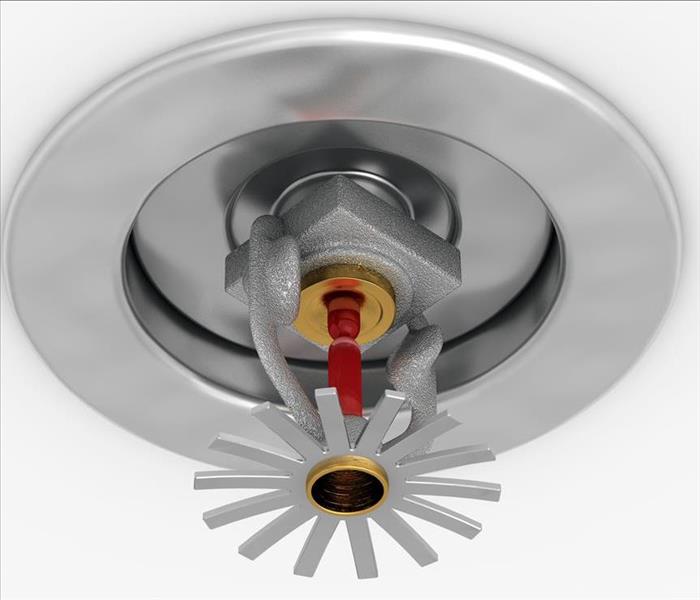 A fire sprinkler.
A fire sprinkler.
Your business in Colorado Springs, CO, could experience the impacts of flooding from a variety of sources. While a strong storm with heavy rains remains the most likely culprit, your building could also have a catastrophic plumbing breakdown. Another possibility is the discharge of your fire sprinkler system while putting out a fire; even an accidental sprinkler discharge, though rare, could release hundreds or thousands of gallons of water into your facility. When fire sprinklers go off in a commercial building, the following steps should be taken.
Cleaning Up Water Damage After a Sprinkler Discharge
Stop the Water From Flowing
Quickly after a fire has been put out, or immediately in the case of an accidental discharge. the water from the sprinkler system should be turned off. This will stop water from soaking flooring, ceilings, furniture and other valuable items. Limiting the amount of water that discharges is one of the most effective ways to limit water damage to your building. All managers and all maintenance workers should know the location of all relevant shut-off valves for the facility.
Call a Local Restoration Company
As soon as things are under control, a call should be made for commercial building restoration services. A team of highly-trained workers will arrive within a couple of hours and begin to inspect and assess the damage to your building. The lead workers will take action to ensure the building is safe, and then they will formulate a comprehensive restoration plan.
Each plan will cover water removal, drying and cleaning and sanitizing. The final stages will cover repairs and construction of damaged structures. One qualified company can perform all of these services.
Contact Insurance for Flooding Coverage
Each water event is handled differently by insurance companies and your coverage will depend upon your policy. In many cases, a fire sprinkler discharge, whether accidental or necessary, is covered by insurance. An experienced restoration company should be able to work together with the insurance adjuster and your company. This provides accuracy and speed and often leads to quicker and more reliable reimbursement for damages and claims.
Inspect the Finished Work
The goal of any professional restoration company is to return your building to its original condition before any flooding occurred. For your satisfaction, take a look at all the work that was done. Make sure that all repairs match the original look of the building. Watch out for any remaining stains or discolored areas. There should be no unpleasant odors coming from the damaged area.
With water damage, it is also important to be on the lookout for mold growth. If the wet area was not properly dried, mold could begin to become visible in a week or two. A professional restoration company will test the humidity of your facility and monitor the situation for any type of secondary damage.
No matter the source, the flooding of your business can be a challenging situation and it calls for a number of timely actions. The restoration process should go smoothly so long as you immediately reach out to an experienced mitigation team.
The Factors That Affect Your Fire Estimate
7/26/2022 (Permalink)
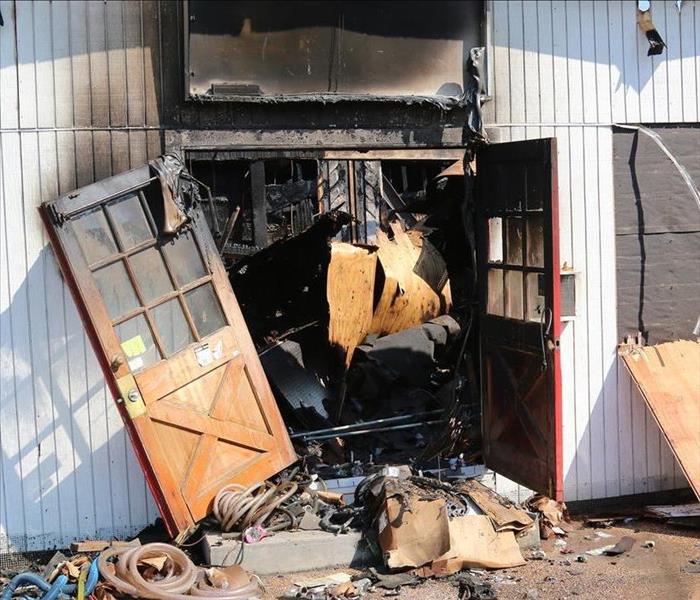 Fire damage in Colorado Springs, CO.
Fire damage in Colorado Springs, CO.
If your Colorado Springs, CO, commercial property is affected by fire, you need to start the cleanup and restoration process immediately. It doesn’t take long for unwanted stains and odors to settle into any furnishings that are salvageable. If moisture from the water used to put out the flames is left untreated, it encourages mold growth. The steps you take in the moments after the fire has been extinguished determine how well your property recovers. These steps often begin with obtaining a fire estimate from a cleaning and restoration agency.
3 Factors in Determining the Fire Estimate
One of your top priorities following a commercial fire understandably is getting back to business as quickly as possible with as little expense as possible. However, some less-reputable fire damage restoration companies may offer a very low bid. Beware of these bids; you could end up with low-quality work and a lot of additional charges. Before you put your business at risk of poor workmanship, make sure you understand the factors that affect the estimate:
1. Thorough Inspection
Trustworthy property damage inspectors have the licensing and insurance in place and can provide proof of these things. The inspector who visits your property will check the roof and roofing materials, the siding and concrete, interior walls, and plumbing and heating systems. The professional will also check for structural damage and check out the stability of doors and walls.
2. Emergency Response
You may have to wait several days before an adjuster catalogs the damage to your property, and then you need to wait even longer before the insurance company approves your claim. During this time, emergency services prevent further, or secondary, damage. The clean-up team may use temporary tarps and boards to prevent wind and water from carrying more debris into the area. Emergency services also often include securing your property to prevent trespassers from carrying away your property or causing more harm.
3. Full-Service Restoration
There are many different actions that restoration professionals take to ensure lasting, comprehensive results:
- Attention to the roof
- Removal of debris
- Thorough drying services
- Disinfection and thorough cleaning of belongings within the property
- Transportation and storage of belongings
- Repairs rather than replacements to keep costs down
- Reconstruction to all parts of the commercial property that were damaged
When you know all of the work that is involved in getting your property back to its previous condition, it’s easier to understand why the estimate from a reliable agency may be higher than the estimate from a lesser-known agency.
A Quick Estimate Is Required for Success
You don’t have much time after a fire occurs on your property to prevent secondary damage. It’s crucial that you contact your insurance provider and a cleanup and restoration company as soon as possible. The good news is that your insurance agent may recommend professionals with a tried-and-true history of success.
Once you receive your fire estimate, you can move forward with your damage claim and the needed repairs. You can then work with professionals from your insurance and your reconstruction crews to get the results you want in a timely manner.
Insurance Professionals Prefer SERVPRO
5/23/2022 (Permalink)
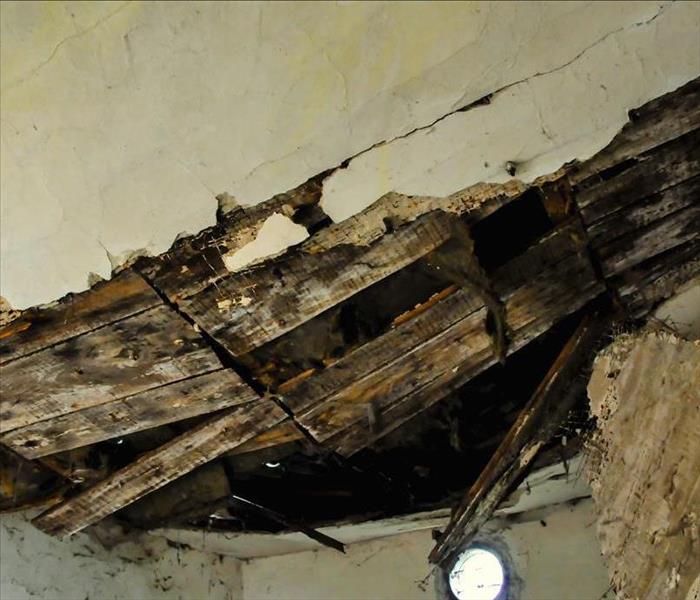 Choose the Professionals and avoid Further Damage in your Property.
Choose the Professionals and avoid Further Damage in your Property.
Over the years, insurance agents and claims adjusters have determined that SERVPRO is their go-to option for disaster loss mitigation and restoration services. Their certified technicians can make the claims process much easier for the insurance professionals and their clients whether a flood, fire or storm wreaks havoc on a structure and its contents. As an insurance agent in Colorado Springs, CO, there are several reasons to hire them for your clients' restoration needs.
Why SERVPRO's Vendor Progam Is the Trusted Choice
Many insurance agents and claim adjusters in the United States and Canada choose the vendor program because the technicians are available to serve your clients with their restoration needs and to provide you with timely updates regarding the loss and restoration strategies they employ. This assistance allows you to concentrate on your work in the insurance field without the need to deal with various contractors. In addition, all of the damage restoration professionals stand by some fundamental beliefs.
1. Rapid Response Is Crucial
Restoration experts are available 24 hours a day, seven days a week, 365 days a year. They are committed to responding immediately to emergency situations. Knowing this can ease your mind that your client will feel more encouraged about the terrible situation that has just occurred.
The professionals realize the importance of taking quick action to mitigate damage. Limiting the amount of loss also means minimizing restoration costs for your company and your client.
2. Expertise and Experience Are Essential
The technicians are trained to Institute of Inspection Cleaning and Restoration Certification standards in fire and water cleanup and restoration. Their employees also regularly complete continuing education classes.
3. Itemized Inventorying Is More Accurate and Efficient
These professionals take the time to itemize everything in your client's loss inventory. Then, they provide you with an Excel report that includes damage photos. This additional information paints a more complete picture of the loss for the insurance agent after a disaster.
4. Electronic Claims Is Easier to Access, Faster and More Secure
The electronic claims service enables everyone concerned to access all of the details of the loss. This file includes scanned forms, digital loss photos, detailed work estimates, reports and real-time updates.
5. Restoration Is Preferred and Often the Most Cost-Effective
People often feel that most damaged items must be replaced after a disaster. However, specialized equipment and techniques enable experts to restore some things to their pre-disaster condition or very close to it. Pretesting is performed to determine what can be salvaged and restored. Restoring some items can be much more cost-effective than replacing them. Taking this approach can significantly cut costs for everyone involved.
As an insurance agent, you have a lot on your plate. When faced with a disaster, your clients deal with a lot, so you want to provide them with some peace of mind that everything will be OK. SERVPRO of Colorado Springs, CO, is an excellent resource to have in your list of emergency contacts for just such situations. Their technicians are experts in their field and have a passion for improving the lives of people who are enduring challenging circumstances.
Getting Back to Business After a Fire
5/12/2022 (Permalink)
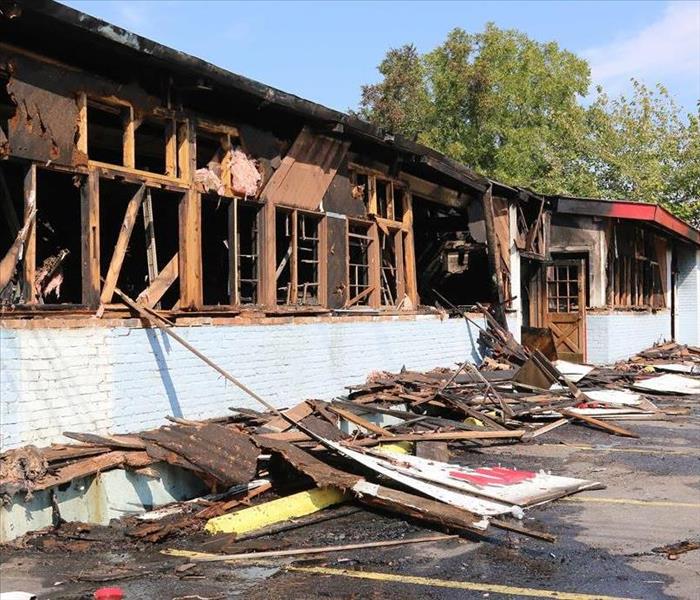 Getting Back to Business After a Fire will be Easier if you Follow Our Tips.
Getting Back to Business After a Fire will be Easier if you Follow Our Tips.
As a responsible business owner, you take every reasonable precaution to keep the workplace safe and protected. From fire insurance to building security, you’ve carefully considered and prepared for operational risks. Unfortunately, despite best efforts, accidents do happen.
What do you do in the aftermath of a fire at your business in Black Forest, CO? Having a plan for disaster recovery and business interruption in advance is strongly recommended. Knowing what to do ahead of time can help minimize the time it takes for you to get back up and running.
Beginning the Fire Restoration Process
The devastation of fire can be overwhelming. It’s important to try to remain calm and clear-headed as you take the following steps:
Document everything
If safe, take photos of your damaged property and make notes of everyone that you talk to, including firefighters, building landlords, etc. These photos will be helpful for damage assessment. Save any receipts or invoices for business expenses. Don’t touch any affected items.
Notify your insurance company
The sooner you call them, the better. A delay in the claims process can delay your recovery. Your disaster recovery plan should include your insurer’s contact information.
Contact a commercial fire restoration company
This provider works with the local authorities and your insurer. The pros also conduct a thorough assessment to determine the most efficient approach for returning your space to pre-damage conditions.
Notify employees, clients, and business partners about the fire
Begin conversations about contingency plans, alternate arrangements, and deadline changes, as necessary.
Secure your office space, if possible
Work with officials, your landlord, and the restoration company about restricting access and preventing the spread of further damage.
Remove any unaffected valuables
If safe, remove any valuables from your space.
Letting the Pros Work
The commercial restoration professionals fully assess the damage and take a comprehensive approach to cleanup, repairs, and reconstruction. Besides fire damage, there may also be damage from smoke, soot, and water used for extinguishment. Water damage may require special cleanup, especially if there is mold. The building may also have additional damage due to firefighters cutting holes in the structure to put out the blaze.
The professionals employ special techniques and equipment for soot and smoke cleaning, sanitizing contaminated items, and drying out surfaces. Talk to the experts about other services such as temporary storage of your office equipment during restoration.
Dealing With Insurance
Insurance companies prefer to work with professional restoration companies to ensure that a damaged property has been completely and thoroughly cleaned. The pros will prioritize repairing and cleaning over replacing, which helps to lower the cost of your claim. Any documentation you can provide helps to expedite the claims process, minimizing the interruption to your business.
While you never hope to experience a fire at your business, you’ll be glad that you have a recovery plan in advance. From notifying the insurance company to calling a fire restoration service, it’s important to detail every base that needs to be covered before you have a problem. The sooner you can get back to pre-fire business, the better it is for everyone.
3 Things To Know About the Value of Commercial Property Insurance
4/13/2022 (Permalink)
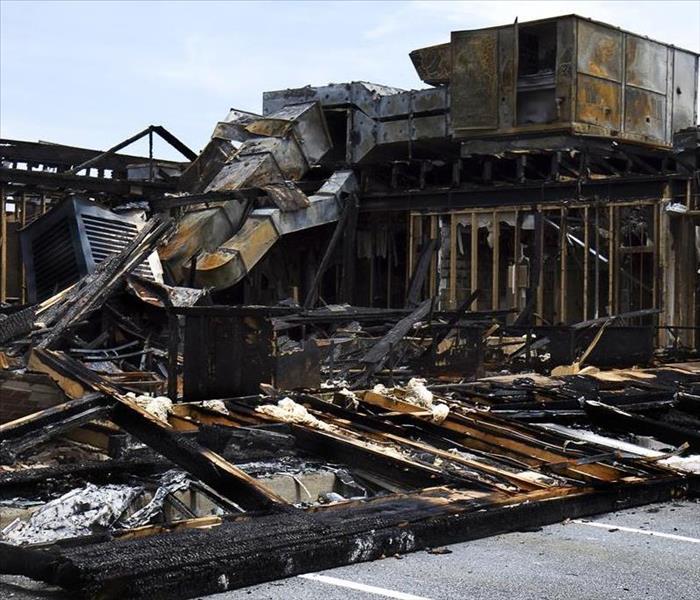 3 Important Things To Know About Property Insurance.
3 Important Things To Know About Property Insurance.
When disaster strikes, it's helpful to know you have a plan, someone or something to turn to in dire times. Commercial insurance acts as a life preserver for business owners in Black Forest, CO, assisting with financial costs should something serious harm the operations.
Don't wait for a calamity to find out the value of this service. Although beneficial, many proprietors may not realize what coverage looks like or how to use it. Know ahead of time how your policy works and how it benefits you.
1. When Can You Use Commercial Insurance?
Most insurance agents bundle liability and property insurance together. The first service handles issues with injury on the site; the second involves coverage for concerns with the damage to the building and its contents. Owners cannot turn away fires, natural disasters and pipe breaks. After all, despite meticulous and conscientious efforts, life happens.
Even harder, when these events happen, proprietors could face thousands of dollars in loss plus the cost of repairs. These expensive tabs can shut doors unless a backup plan exists. Property insurance assists with these perils. It's a safeguard for life's unfortunate events.
2. What Does the Policy Cover?
Policies vary, but, in general, they provide funding for several essential services. The agency wants to restore the property to functional status and prevent future complications. Therefore, insurers typically assess the harm, recommend cleaning procedures and rebuild and provide funding to help replace what was lost. They pay up to a certain amount of the repairs minus the policy's deductible.
For example, if a blaze spreads throughout your factory, the insurer must assess the cause of the fire damage. If it falls within the policy, an adjuster then examines the grounds for the extent of the concern. In addition, the policy offers approval for a fire remediation team to come in and secure the premises. These experts then work to immediately mitigate further spread of ash, smoke and secondary damage.
Owners may apply the payment to cleaning and rebuilding the premises based on the company's and adjuster's reports. The money may fund the sanitation and restoration of the space.
Furthermore, insurance policies often assist with property loss, offsetting the fees to replace or clean assets. This clause focuses on signage, documents, inventory, technology, landscaping and furniture.
3. How Do Owners Initiate a Claim?
Know the agent's number. Contact the insurer as soon as you receive word of the fire (or escape from it). Provide the date and time of the conflagration, and request a claim begin. Discuss upcoming expectations and how best to continue monitoring the claim's process. Stay in touch throughout the next few days, updating the company about arising issues. Send any documentation or photos of the scene to the agent in charge.
Commercial insurance may seem intangible to many people. It's abstract because people rarely use it unless a calamity occurs. However, this service delivers significant support during hard times. The policy helps owners recover from substantial setbacks such as fire, theft or tornadoes and provides financial support to minimize the out-of-pocket costs of fixing the building and purchasing new equipment and supplies.
4 Ways to Prepare Your Business for a Disaster
3/9/2022 (Permalink)
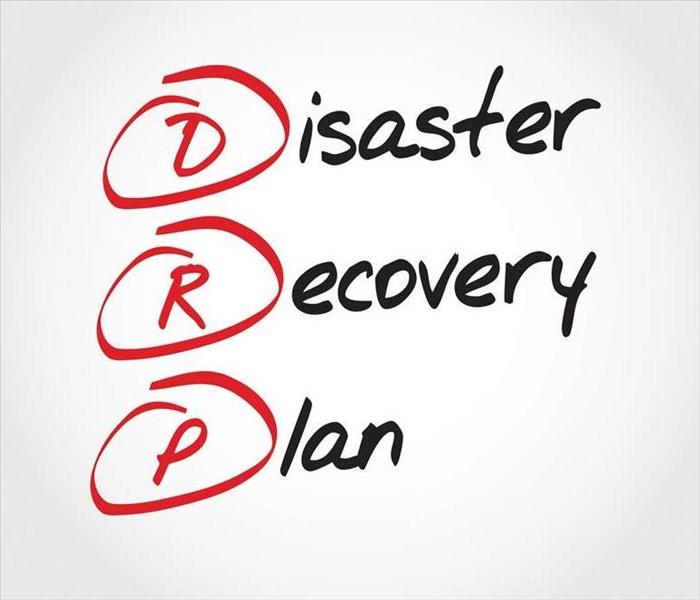 You can Be better Prepared for a Potential Disaster by Following our Tips.
You can Be better Prepared for a Potential Disaster by Following our Tips.
Knowing that the unexpected can happen, a business in Black Forest, CO needs to plan ahead for anything. Disaster preparedness is essential to stay successful in chaotic times and keep business running as normal as possible. Below are four ways to help navigate those trying times.
Be Prepared for a Disaster by Following These Tips:
1. Have a Plan in Place
Even though an event, whether natural or not, may come as a surprise, that doesn’t mean a business can’t have a plan in place. Developing a disaster plan is essential. These plans cover everything from potential risks to mitigating those risks and ensuring everyone clearly understands the steps to take in an emergency situation. An essential component is an evacuation plan, which should have a designated safe place to meet, recommended paths to take and a list of people who may need assistance.
A team should be created to ensure that the plan is properly enacted, as well as designated leaders to lead during the crisis. Like with anything, the plan only works if it is practiced. Clearly communicate all elements of the plan to ensure that happens.
2. Backup Data
In this day and age, data is everything. When it comes to business preparedness, ensuring that data is backed up in a safe, alternate location is essential. If vital documents or systems are lost, it may mean going out of business. Whether in the cloud or a secure storage facility, keep copies of everything that is detrimental to business operations. It is especially important to ensure that any legal, insurance or tax documentation is protected. For on-site storage, consider sealing the documents and placing them in a fire and waterproof container.
3. Reinforce the Property
Planning for disaster preparedness includes considering the property. When was the last time the roof was inspected? How old are the fire extinguishers? Are there sandbags in case of a flood? General upkeep of the business and equipment needs to be part of the regular routine. Roofs, windows and doors need to be inspected for any signs of damage. Large furniture or equipment should be anchored. Nearby trees should be trimmed to mitigate a large branch falling.
Keep a checklist of maintenance needs and ensure that any needed repairs are immediately made.
4. Stock Up on Essentials
Depending on the event, it may mean hunkering down in the office longer than expected. To better weather the storm, keep a healthy supply of emergency items in stock. Ensure these items are only used in an emergency. Some of the essentials include a first aid kit, blankets, water, non-perishable food, flashlights, battery-operated radio, duct tape, and basic tools.
Also, ensure there is an up-to-date emergency contact information list. This should include local emergency agencies and disaster-relief resources, as well as customer, vendor and employee information.
While considering the unthinkable may not be a fun occasion, it is necessary to ensure your business succeeds and employees are safe in any situation. Taking time to focus on disaster preparedness helps ensure everyone is on the same page and may help minimize downtime after the event is over.
How To Respond to Category 1 Clean Water Flooding
2/22/2022 (Permalink)
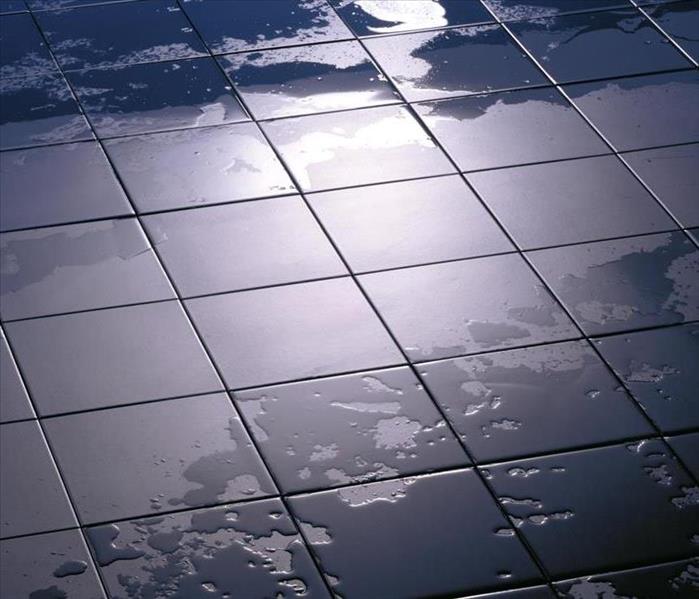 Learn more about Water Flooding in your Black Forest, CO property. If you have more questions, just call us.
Learn more about Water Flooding in your Black Forest, CO property. If you have more questions, just call us.
Flooding on your Black Forest, CO property can cause a lot of problems, whether a broken pipe led to soggy landscaping or a backed-up toilet sent seeping water throughout offices. It's important to know that each type of flooding requires unique methods of water damage recovery, particularly when it comes to the three categories of water:
Category 1: Clean water that has not been contaminated by chemicals or organic matter.
Category 2: Often referred to as gray water, this comes from clean supply lines, such as broken appliances or leaking faucets.
Category 3: Black water has the most potential to be hazardous. It may contain raw sewage, chemicals, and other dangerous contaminants.
Important Facts About Clean Water Flooding
The good news is that with the help of water damage restoration professionals, you can have your property up and running again fairly quickly. However, even though Category 1 water poses the least amount of trouble for property owners, but this doesn’t mean you can postpone or relax your recovery efforts.
You Can Prevent Flooding From Category 1 Water
There are many sources of clean water flooding, including broken pipes, damage along a water supply line, overflowing sinks and toilets, heavy rainfall, and melting snow. Although there are a lot of potential sources of flooding, routine inspections and maintenance are the best way to prevent damage. Make sure that you schedule routine inspections and keep a close eye on pipes, your roof, the gutters, and other areas where water is often present.
Category 1 Water Damage Can Worsen
You should also be aware that water coming from clean sources may pick up contaminants as it soaks through carpeting or mingles with chemical cleansers. As category 1 water sits, it presents a welcome environment for bacteria and mold to begin growing and spreading. This means that although the water started out clean, it could degrade into a more dangerous classification.
A Quick Response Is Crucial to Full Recovery
The faster you can get professionals onto your property the better. Technicians will immediately take the following actions:
- Pinpoint the source of the flooding and stop the flow of water.
- Assess the potential for contamination and secondary damage.
- Remove water from your property and move furnishings out of the affected area.
- Increase ventilation by opening doors and windows and setting up powerful fans.
- Thoroughly dry furnishings, machinery, carpeting, structural components of the property, and all the contents of your buildings.
It only takes a day or two for floodwater to lead to mold growth, so the fast response of professionals is crucial to preventing more loss and expense.
Even Minor Leaks Could Indicate Bigger Problems
Take every dripping faucet, leaky toilet, and clogged pipe seriously. These minor problems may be the result of aging pipes, poor maintenance, and other major issues. The presence of a minor clean water leak can help you prevent a lot of frustration and expense in the future.
What other questions do you have about commercial property flooding? Do you have any tips for other property owners in Black Forest, CO? The more you know about Category 1 water damage, the better you can respond in the event of flooding.
When To Get Flood Insurance for Your Business
1/14/2022 (Permalink)
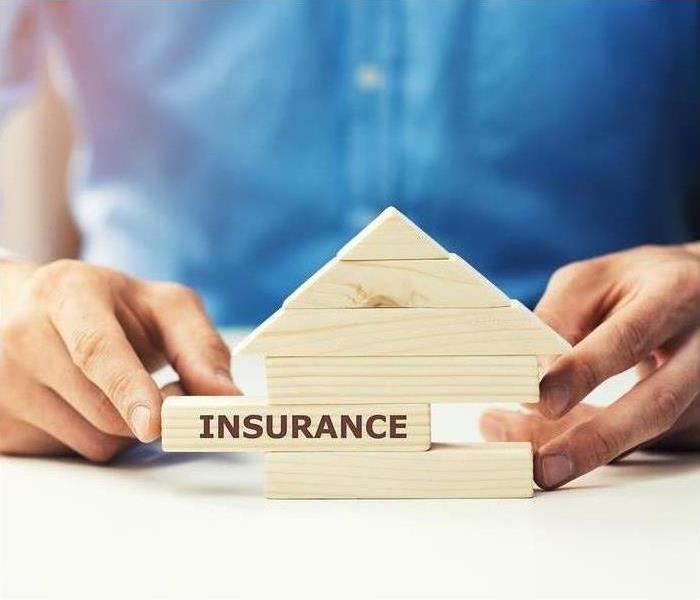 Investing in the right flood insurance policy can help your business recover from potential devastation.
Investing in the right flood insurance policy can help your business recover from potential devastation.
Businesses rely on commercial insurance providers to help them out in times of need. Insurance for flood damage usually requires a policy separate from any general business plan, so it can be easy to overlook. However, water damage repair expenses can accumulate rapidly, so depending on the situation of a business, it is a good idea to prepare for the worst and invest in a smart insurance plan.
Why Getting a Flood Insurance
Extreme Weather Threat
Many parts of the country pose flooding risks. If you live in areas that feature any of the following yearly weather patterns, you should consider getting flood insurance:
- Winters with heavy snowfall and warm springs that result in rapidly melting snow
- Coastal areas with a high risk of experiencing hurricanes
- Other regions of the United States prone to extreme weather
Severe weather can be unexpected but cause excessive damage to a commercial building and its contents. Even a small insurance policy can save businesses thousands in repair expenses.
Riverfront Properties
Commercial buildings and assets located near rivers and lakes can suffer massive damage in seasons with torrential downpours. Rivers and lakes rise and expand in years of abundant rain, allowing water to creep into and even submerge surrounding properties. Most of these areas will be required to carry flood insurance policies, but for businesses that are not, these policies are still a wise investment.
Urban Areas
The development of roads, businesses, homes, and other municipal buildings can alter the landscape of a region, making it more prone to flooding. Even modest amounts of rainfall in Black Forest, CO can result in dangerous flooding given the correct circumstances.
Federal Requirements
Federal government regulations require some companies to purchase insurance. If a business is deemed to be in a high-risk flood area and a federally regulated or insured lender controls its mortgage, then the business will be required to own insurance for flood damage.
Protecting the assets and finances of your business are paramount to its success. Visit us for more information on commercial storm damage.
Ways Companies Can Conserve Water
12/20/2021 (Permalink)
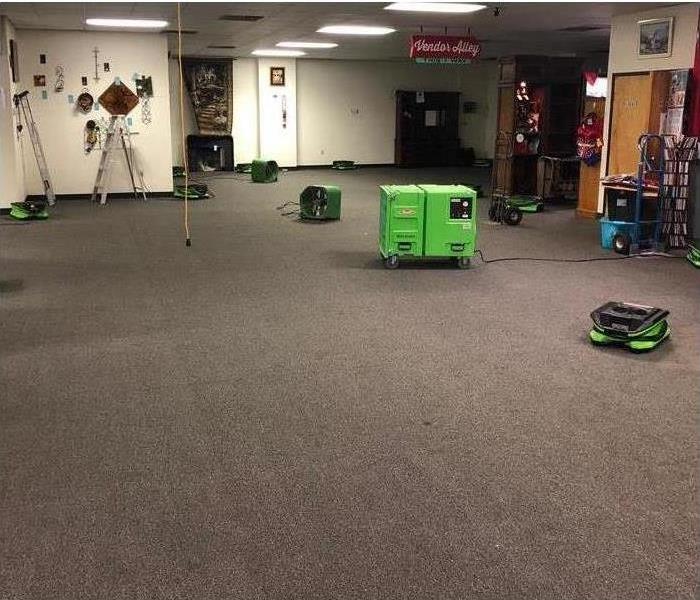 Commercial water damage in Black Forest, CO.
Commercial water damage in Black Forest, CO.
For a business in Black Forest, CO, the bottom line is always a consideration. Every little part of operations can affect that, including items related to the building the business operates out of. A building’s water system is an intricate system that could potentially be flushing money down the drain. From simple water issues like a leaky faucet or running toilet to how it's used can all beef up the water bill.
Hidden Problems
While newer structures may not have as many water issues, older buildings could potentially be hiding leaks that could pose bigger problems. Left unchecked, a leak can cause extensive water damage, resulting in expensive repairs and potential short-term closing for those restorations. Signs of a leak include:
- Increased water bill
- Noticeable wet areas
- Water stains on the ceiling
- Formation of mildew or mold
- Water damage on floors and walls
Ways to Save
For businesses that are on top of potential water issues, there are other ways to dwindle down the utility bill. An audit will help you determine where and how water is being used. From this, a water upgrade or incorporating water-saving procedures can make a big difference.
- If your business has a water cooler or has other appliances that use water, they have come a long way. Many are available that can self-monitor and are designed to enhance energy efficiency.
- Have an open dialogue with employees. Educate and encourage them to use be water conscious.
- If not already, install low-flow toilets. They are designed to use significantly less water.
- The right landscaping can water the grass and reduce the need for a sprinkler system, as well as make it known that your business is doing what it can to help the environment.
Whether your water bill is skyrocketing because of a leak or you are ready to take a step toward enhanced conservation, you don’t have to go it alone. A professional can provide guidance in repairs and the newest technology to keep water usage down.
The Importance of Roof Inspections After a Storm
6/22/2021 (Permalink)
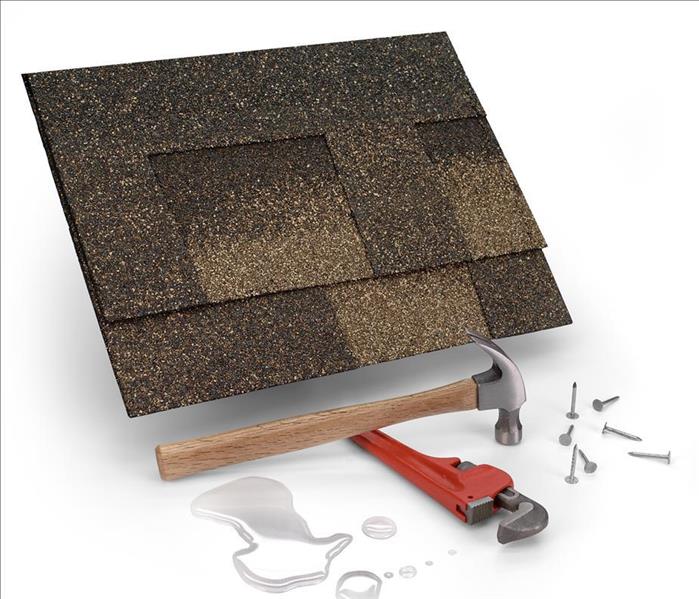 Roof inspection is important after a storm to avoid further damage.
Roof inspection is important after a storm to avoid further damage.
A commercial roof installation is an expense for any company, regardless of size. If maintained, the new roof will last at least 10 years, but it can last as long as 40, depending on the material. However, even when the roof structure is sound, you might still experience the occasional roof leak because of storm damage.
If you want to avoid the water damage that stems from leaks in the roof and any other potential problems, you should perform a roof assessment after every storm. A storm mitigation service in Colorado Springs, CO, might suggest following a three-step approach.
3-Step Approach for Roof Inspections After a Storm
1. Check for Wind Damage
Wind damage, especially with shingled roofs, is often easy to spot. You can walk around the property looking for signs of shingle loss. You might notice bald patches on the roof or see loose roofing materials on the ground. The beauty of this quick assessment is you can perform it from the safety of the ground.
2. Inspect the Attic Space
If your facility has an attic space, you might want to climb up and have a look around for any potential roof leak. Attics often do not have adequate lighting, so bring a flashlight. Once in the space, shine your light across the ceiling, looking for any reflective areas. If you don’t see any reflections or recent water damage, close your eyes and listen for dripping.
3. Assess the Roof
If you feel safe to do so or have a flat and easily accessible roof, take a few minutes to inspect the surface. You want to look for any clear signs of damage to the roofing materials. However, remember safety is your primary concern. If you do not feel comfortable or do not know how to remain safe on a roof, contact a local specialist to inspect the roof.
While a commercial roof is an expense, a minor roof leak is no reason to risk your safety. Perform the above assessments after a storm, but stop at any point you do not feel safe and call an expert. These assessments should be performed especially after severe weather.
3 Ways To Prevent Water Damage During New Construction
5/25/2021 (Permalink)
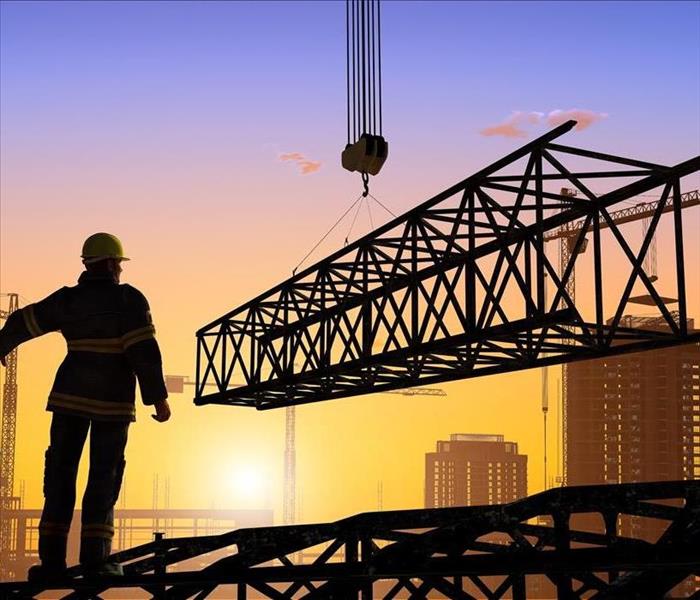 Protect your construction site from water damage
Protect your construction site from water damage
While new construction is exciting, especially for a business owner, there are potential risks when it comes to water damage. A water pipe repair might sound unlikely for a new build, but in the process of establishing new plumbing systems mistakes and accidents can happen. It is also plausible that storm or weather issues might lead to flooding and the need for a water mitigation service in Black Forest, CO. There are at least three ways to prepare your construction site for potential water damage.
3 Ways to Prepare Your Constructions Site for Water Damage
1. Ensure Quality Control at Every Stage
Prevention efforts can begin in the design phase of a new building and new systems. Make sure that blueprints accommodate the right sizing of pipes and mechanicals. You always want to review building plans to ensure that the fixtures you install can handle the water pressure your system needs, avoiding the risks of a broken pipe.
2. Designate a Water Protection and Prevention Team
Beyond staying updated with all plans, it is wise to install a protection and prevention team. This team will focus on handling water prevention strategies. They will have plans for dealing with a water pipe repair or an external flood. By remaining prepared for emergencies, these teams can minimize potential losses in the field.
3. Test and Verify
Even with new construction, a flooded property is a problem. While you cannot control the weather, you can control how you move on from one task to the next. Granted, you will have inspections, but beyond that, you can test the systems to ensure everything meets your standards and those of the city and state.
While business owners do not like to believe that water damage is possible in new construction, a water pipe repair or shifts in the weather can result in flooding. The key to reducing overall risk is to prepare for potential accidents or mishaps.
How Frozen Pipes Cause Water Damage
4/15/2021 (Permalink)
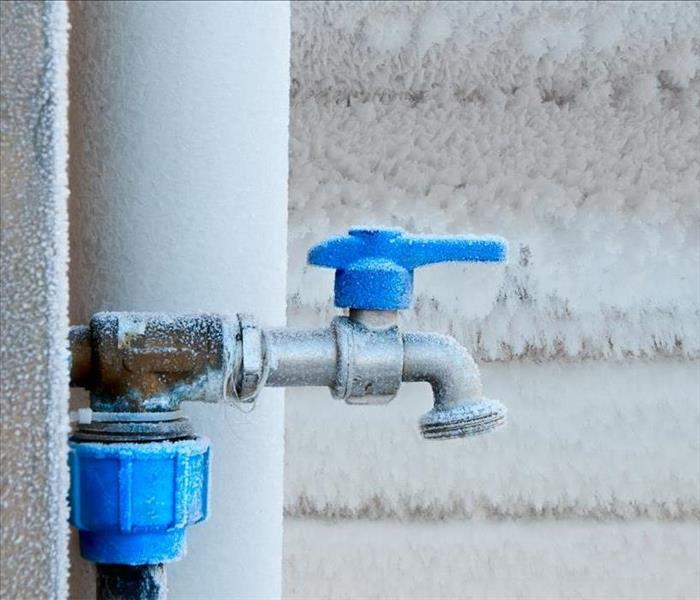 Freazing temperatures can damage your pipes
Freazing temperatures can damage your pipes
When you think of storm damage, you may naturally think of rain-related flooding. However, this isn't the only cause of water damage. Freezing temperatures can lead to a burst pipe, but you can protect your facilities from this issue when you know more about how this happens.
Water Damage Caused by Frozen Pipes
Exposed, Unheated Pipes
There are several areas in buildings where you're more likely to find a frozen pipe:
- Unheated spaces, such as garages, basements, unused upper stories
- Plumbing and other water systems on exterior walls
- Fire suppression systems
- Outdoor spigots
Any systems throughout your facilities that transport water could be affected by the low temperatures of winter storms. The risk is greater when sections of those piping systems have standing water.
Expanding Ice
There are two common ways that freezing temperatures can lead to a burst pipe in your Black Forest, CO, facility. The first is through expansion. As water freezes and becomes ice, it expands. If there's enough water in the pipes, it will cause the plastic or metal of the pipe to weaken. Eventually, it could weaken to the point of bursting. Additionally, the pipes themselves may expand as they freeze, further complicating the issue.
Thawing Temperatures
The second way a frozen pipe can lead to water damage happens when temperatures warm up, and the frozen water in the pipe begins to melt. If the ice stressed the pipes to the point of failure but didn't expand further, small cracks and leaks could form without notice. As the temperatures rise, and the ice turns to water, those leaks allow water to flood into basements, bathrooms, and other areas of your building.
Damage Prevention
It is possible to prevent these damages by adding insulation around exposed pipes. Consider reaching out to water damage cleanup and repair technicians for pro tips appropriate for your neighborhood. Consistent inspections and repairs will also prevent damage.
The more you know about how extreme weather and temperature changes can affect your pipes, the better you can avoid damage, such as a burst pipe. What are some problems you've experienced? How did you recover from the resulting damage?
4 Crucial Elements of a Fire Preparation Plan
3/26/2021 (Permalink)
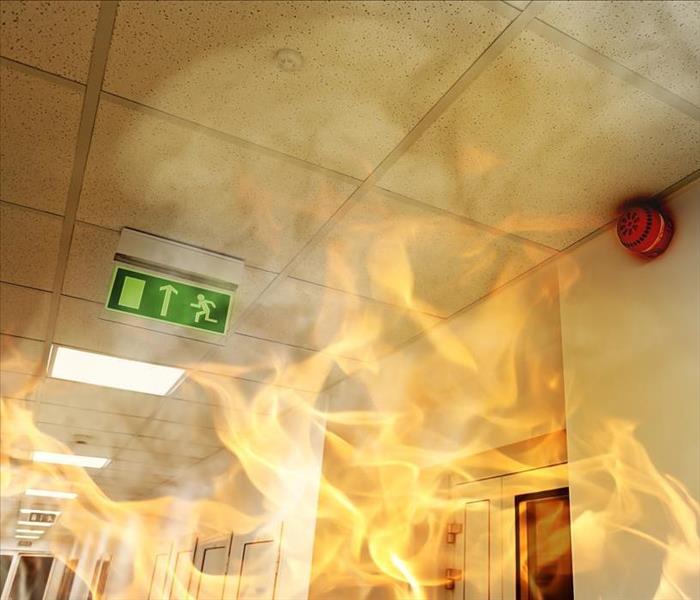 Conduct fire drills frequently
Conduct fire drills frequently
If a fire breaks out in your Black Forest, CO, business, you and everyone else in the building may have just a minute or two to escape. This is a sobering consideration and should lead to serious fire preparation plans.
Fire Preparation Plan
Make sure that your disaster preparation plan includes the following elements:
Create and Post a Disaster Plan
This plan must include fire prevention steps, a schedule for fire drills, and evacuation routes with multiple exit paths. Your insurance provider, the local fire department, and the American Red Cross are all valuable resources when creating this plan.
Install Fire/Smoke Alarms, Fire Extinguishers, and Sprinkler Systems
Each one of these elements reduces the risk of harm during a fire. The National Fire Prevention Association has established guidelines for where and how many alarms and fire extinguishers must be installed. As you develop your fire preparation plan, strive for compliance with the NFPA standards. Once installed, clean and test alarms frequently. Review appropriate maintenance for extinguishers and sprinklers with fire professionals.
Complete Fire Prevention Steps
There are several precautions that decrease the likelihood of a fire emergency:
- Make sure facilities are properly cleaned and maintained.
- Use electrical cords properly to avoid overloading outlets.
- Store flammable and combustible materials appropriately.
- Use furnishings and décor that are fire-safe and less likely to burn.
- Keep evacuation paths clear.
- Educate staff, personnel, and any renters on proper fire safety behaviors.
Effective fire prevention depends on people understanding how fires start and the effects of fire damage.
Conduct Fire Drills Frequently
Some people suggest conducting drills twice a year, but many experts recommend holding drills much more often. During a fire, the resulting smoke makes it very difficult to see, so familiarity with all evacuation routes is crucial.
A complete fire prevention plan is the best way to protect both people and property. If your Black Forest, CO, property does suffer from fire damage, reach out to fire cleanup and restoration professionals to get your facilities back up and running.
My Commercial Toilet Won't Stop Flushing! What Now?
2/11/2021 (Permalink)
 Continually flushing toilet can lead to water damage.
Continually flushing toilet can lead to water damage.
Whether a commercial toilet in a restaurant, sports venue or another location, it probably uses a flushometer. Toilets that use flushometers are different than residential toilets. Typically, they work well, especially for the traffic that they see. However, when something goes wrong with a flushometer, it can cause water to continuously run into the toilet. This can turn into a toilet flood that requires hiring water damage remediation professionals to manage. One of the most common causes of a commercial toilet overflow is when they won't stop flushing. This is known as a never-ending flush.
3 Steps to Stop a Commercial Toilet from Flushing
Stop a toilet that's continually flushing by taking these steps:
1. Turn Off the Water Supply
First, you must shut the water off from the flushometer. You'll need a flathead screwdriver for this job. There may be a cover on the screwdriver slot. If so, you'll have to remove it, too. Turn the screwdriver clockwise until you're sure the water has been successfully shut off.
2. Look for the Cause of the Problem
Discovering the exact cause of the toilet overflow problem could take a while, but there are a few things you can inspect. The bypass hold of the diaphragm assembly could be dirty or damaged. The relief valve or inside cover could also be damaged. The relief valve may not be seated properly. The line water pressure could've dropped, not allowing the valve to close.
3. Try Different Solutions or Replace Parts
Try cleaning sediment off parts that look dirty. Also, try closing the control stop to restore the water pressure. If these methods don't solve the problem, you'll probably need to replace one or more parts.
A commercial toilet that continues to flush non-stop is not usable. Depending on your business, if it's one of your only toilets, it could be a big issue that must be solved immediately. The never-ending flush can also cause a toilet overflow, creating a hazard for your Black Forest, CO, patrons.
Recovering From Commercial Fire Damage With the Help of Fire Restoration Services
1/20/2021 (Permalink)
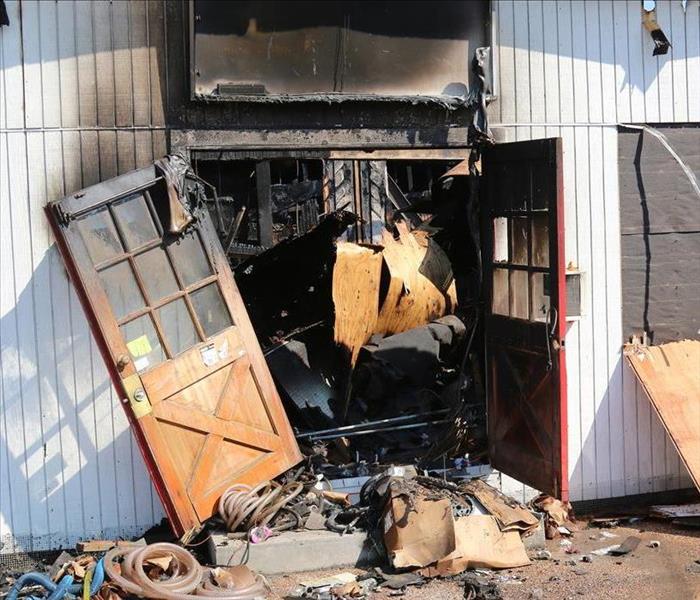 Commercial fire damage
Commercial fire damage
The site after a commercial fire is often overwhelming, inventory lost, roof collapse, machinery damaged. Knowing how to proceed after such a disaster does not come naturally to most business owners, but thankfully, it does for fire cleanup services in Colorado Springs, CO. These professionals can help you rebuild your property through a four-step process.
4 Steps to Recover From Commercial Fire Damage
1. Property Assessment
After extinguishing the fire, the fire department and other emergency services will disband, likely leaving you to determine the next steps. Upon calling your insurer, you may learn that a fire restoration service is your next best call.
The service will send out an initial response team within 24 hours. Their job is to walk through the property and assess the damage, including structural issues like roof repair. With an assessment, they can tell you how long the project will last and estimate the restoration cost.
2. Mitigation Efforts
Before making any repairs to the facility, the restoration service might recommend mitigation practices, ensuring that your insurance claim has the best chance for success. Mitigation is the practice of preventing further loss. The techniques used to protect your property against weather, wildlife, and vandals can include security fence installation and board up and tarp services.
3. Stabilization and Cleanup
Before permitting teams to enter the building, the restoration service may send in structural engineers to determine if any special bracing is needed for stabilizing the structure. With the property secure, the crew can enter and begin the fire cleanup, removing debris, water, ash, and smoke damage.
4. Restoration and Reopening
After the cleanup, the real work can begin. The crew can start replacing and rebuilding the structure. The rebuilding process can take as little as a couple of weeks to several months or more, depending on the level of devastation. However, when all is done, you can reopen your business with no remnant of the fire.
Depending on the severity of the fire, fire cleanup can seem overwhelming. You are not alone in the process. There are several services you can contact for help.


 24/7 Emergency Service
24/7 Emergency Service















